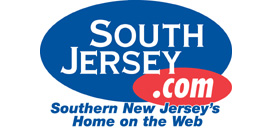What we`re drinking now
The 403 restaurants that responded to the magazine`s questionnaires are spread across the country and include everything from nice neighborhood places to culinary palaces like New York`s Chanterelle and Napa Valley`s French Laundry. Because the restaurants were culled from the most popular restaurants in Zagat Survey`s 30 city and regional dining guides, the poll is definitely skewed toward the middle and up in dining prices. But it`s a good picture of what people like to drink when they`re not just settling for the house jug pour at Cheeseburger World.
The year 1999`s most prevalent trends, according to Wine & Spirits, were climbing prices and experimentation, two phenomena that had more in common than first meets the eye. Up until two years earlier, the three most popular varietals - chardonnay, cabernet sauvignon and merlot - had accounted for at least 64 percent of restaurant wine sales, a figure that plunged to just above 55 percent in 1999.
What`s happening is partly that people are reacting to the higher prices of those most popular wine types. The average price of a bottle of chardonnay or merlot in the 403 restaurants was more than $43; the price of cabernet a whopping $72.98. Only two years before, in 1997, cabernet had been around $54 - a reflection of the soaring prices for the suddenly molten-hot top California bottlings from the likes of Silver Oak, Caymus and Far Niente. Other wine categories that rocketed in price between 1997 and 1999 include French wines generally, which soared from around $50 to nearly $67 on average, and sparkling wines, which topped $76 in the pre-millennium, up from $66 in 1997.
With prices like those to contend with, it`s no wonder that restaurant-goers are looking around, to wines like syrah, pinot noir, even previously hard-to-sell rieslings from Germany and California. Diners are also, of course, opting for less expensive versions of their favorites from Australia, Chile and Spain.
Chardonnay is still restaurant-goers` favorite, but it now makes up only about a quarter of bottles sold, vs. 44 percent in the early 1990s. All but three of Wine & Spirits` top 31 sellers were American, with Sonoma-Cutrer out in front by a considerable margin over Kendall-Jackson, Cakebread Cellars and Ferrari-Carano. The three French contenders were Burgundy shippers Maison Louis Jadot (No. 6), Maison Louis Latour (No. 9) and Maison Robert Drouhin (No. 23). The list was led by Sonoma County wineries, which accounted for five of the top 10 sellers, and 10 of the top 31.
Merlot, which one of the poll`s sommelier respondents tagged as "the gateway red," remains strong, but price increases have leveled off, at least compared to cabernet sauvignon. This may be because of the perception that merlot is a steppingstone to the big-time reds, but only in very top bottlings are they worth the same kind of luxury price as, say, a great cabernet. Sonoma`s Clos du Bois was far and away the most popular merlot, with Napa`s Markham and Sterling Vineyards tied for second. The top 27 brands included five wines from merlot-crazy Washington, including Chateau Ste. Michelle, Columbia Crest, L`Ecole No. 41, Canoe Ridge and Hogue Cellars.
The field seemed clear for California cabernet sauvignons, with Bordeaux reds all but pricing themselves out of the market (according to Wine & Spirits, cabernet-based Bordeaux`s restaurant prices doubled in 1999, to an average $164 per bottle). But the staggering thing is how quickly the California bottlings moved up in price to fill the gap. The top cab, Silver Oak, was well over $100 a bottle, while No. 7 Opus One rocketed to $198. With No. 2 Jordan`s wine selling for more than $74, No. 3 Beringer`s Knight`s Valley ($47) and Napa ($43) bottlings were veritable bargains.
And speaking of bargains, according to Wine & Spirits` poll, the most popular restaurant brands under $25 were led by Californians Woodbridge by Robert Mondavi (Cabernet and Chardonnay) and Fetzer Vineyards Sundial Chardonnay and Eagle Peak Merlot. The bargain power of imports was very evident, however, as four of the top 10 were foreign wines: Ecco Domani from Italy, Lindemans from Australia, and Torres and Vega Sindoa from Spain.
The most widely served "lowest-priced wine on the list" was Beringer`s White Zinfandel, which went for under $19 a bottle on average. Two rieslings were next in order, Chateau Ste. Michelle`s $20 bottle from Washington, and Bonny Doon`s $19 "Pacific Rim" bottling.
Overall, what comes out of a reading of Wine & Spirits` poll is that America is becoming both a more wine-curious country, and a country where diners are increasingly willing to shell out substantial dollars for special wines. We`ve come a long way, baby. And, for wine lovers, it`s only going to get better.
(c) Copley News Service
advertisement

Author: Richard Nalley
Archives
Vintage port is built to last
California`s Chalone making a comeback
Dining well in California wine country
Ports are more durable than most wines
Grappling with grapes
The many glories of grappa
A wealth of great wine
The seismic shifts at Chandon
The readers always write
Here`s all the news that`s fit to vint
A wine with wheels
Robert Mondavi`s California dream
A level playing field at the Monterey Wine Competition
Fine wines can still be kosher
You`ll appreciate your older wine more than it appreciated
More Articles







